The Recent Race to Cloud and the six Rs to guide your way
The arrival of Covid-19 has forced businesses to question much of what has previously been taken for granted with regards to IT infrastructures.

The most agile amongst them have already put in place the clearest answer to new challenges - a migration to cloud.
For organisations that have maintained traditional on-premise datacentres and server rooms, an overnight shift to remote working has almost certainly made them wonder how they’ll regularly maintain or fix equipment in any future lockdowns and whether their office bandwidth will cope with disparate remote working.
For a large percentage, cloud adoption has been the obvious answer. Since so many have always had a cloud migration project on the backburner, Covid19 just essentially sped up that project, allowing businesses to evolve and adapt to a decentralised workforce without really missing a beat.
Organisations which want to embark on the journey should begin with establishing a cloud strategy and planning their migration into a cloud environment, either private, public, or, as most enterprises do, a hybrid or multi-cloud approach.
This acceleration of Cloud plans has been a recurring theme across almost all of our customers, with feedback from many that they now wish they’d done it earlier.
Determining the correct approach and strategy will be unique to each business but the six Rs is a good framework to consider when planning for cloud on a per-system basis, and it’s certainly a great starting point for businesses unsure of the correct approach.
Rehosting or Lift and Shift
Migrating in this way can offer quick wins, such as removing dependencies around the on-premise server room or phasing out end-of-life hardware quickly. It’s an excellent initial stepping stone to re-platforming and re-architecting systems or applications, given that the hard part has already been done.
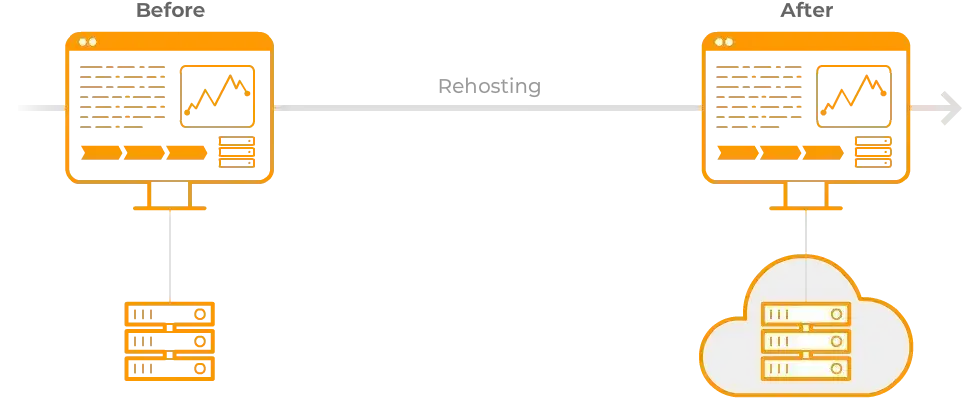
This method is also particularly useful for legacy applications and systems where the architecture won’t benefit from change. It doesn’t, however, allow organisations to immediately realise the benefit of a cloud native platform.
Re-platforming or Lift and Change
Re-platforming is an extension of rehosting, often involving a degree of change to a system or application to benefit from some of the cloud-native 'platform as a service' functionality. An example is taking an application server's database and migrating it to an Azure SQL backend rather than a traditional SQL server. This approach lets you benefit from lower running cost, and lower administrative cost of PaaS tech, yet forms a good balance between fully re-architecting a system to be cloud-native, and maintaining a traditional architecture from a lift and shift approach.
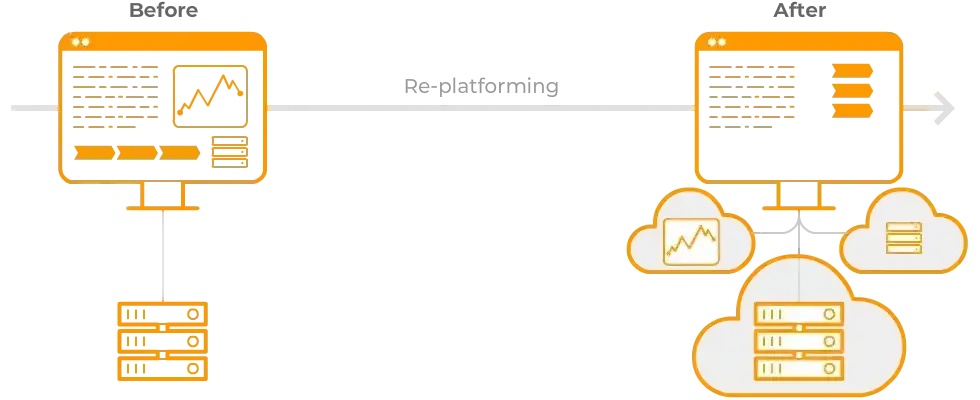
Rehosting and re-platforming are both well suited to hybrid deployments where workloads are spread between private, hosted and public clouds.
Re-architecting or Rebuilding
Re-architecting is the most demanding migration path in terms of cost, effort, complexity and skill, but often with the most significant payoff in terms of becoming fully cloud-native and allowing the use of components such as AI, machine learning and function-based or 'serverless' computing options that simply aren't readily available in traditional infrastructures.
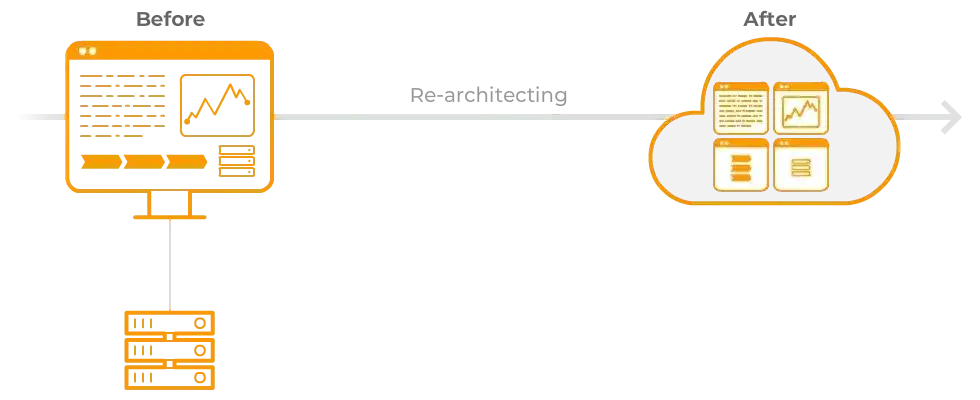
This might involve breaking a traditional application down, containerising aspects of it, and rebuilding it in a completely new form or design. This migration method is the best way to take advantage of technical developments being made by public cloud providers or for scalable applications that have bursty workloads, but involves a lot of specialist skillsets and development resources so may not be feasible or economical for some organisations.
Replace or Re-purchase
Repurchasing involves a complete replacement of an existing application and often tends to take the form of a migration to a cloud-based software-as-a-service replacement. Rather than maintaining a legacy SAGE accounting server on-premise for example, it may be replaced completely with SaaS-based offering, or old, in-house CRM system may be replaced with salesforce. These solutions do away with the need for specialist skill requirements and often offer far more functionality.
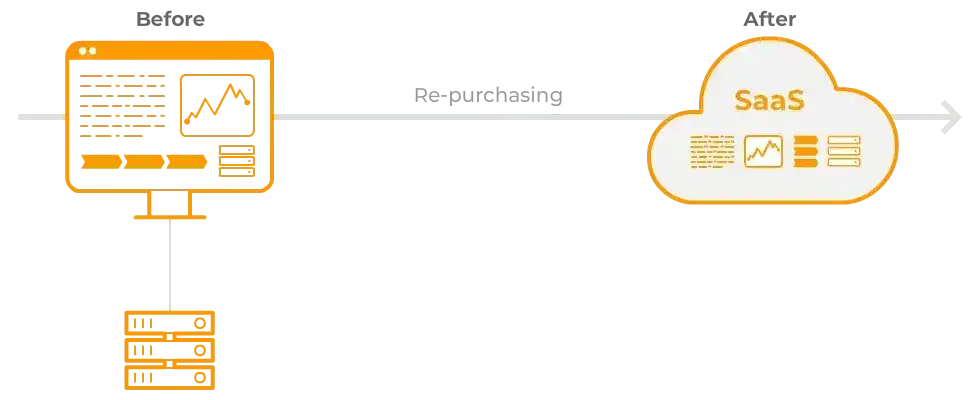
Retire or Retain
These final two Rs, whilst not strictly migration methods, are appropriate options for some systems and applications, particularly when a whole organisation is moving to cloud.
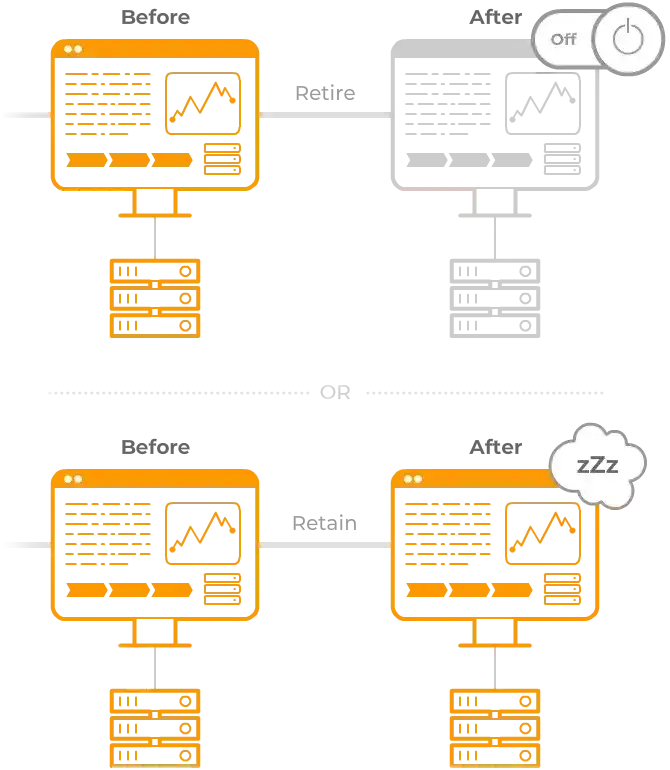
Up to 10% of many organisation's IT portfolio are no longer in active use, and retiring some applications just makes sense. On the flipside, where technology, hardware or applications exist that have recently been refreshed, or are being gradually run down and phased out, there may be a case to retain these short-term.
Continuous Optimisation and the Highest ROI
Regardless of how you migrate to a cloud platform, some fundamental principles always must apply. A regular review and optimisation stage is critical in any cloud environment. Moving from a CAPEX model to an OPEX model of consumption brings with it risks of spiralling costs and a tight focus on controlling spend.
Optimising what you have in cloud should not be overlooked to ensure you're getting the best value. According to the State of the Cloud Report 2020, organisations are on-average 23% over-budget on their cloud and estimate that they waste 30% of their total spend unnecessarily.
The 'big three' public cloud providers have tools built into their administrative portals to help fulfil this role, and there are a huge number of third-party products and applications to facilitate this further. Traditional monitoring products such as PRTG and SolarWinds can also give excellent performance insights into what you run to help eliminate waste.

Organisations can consider tiering cold, or archived data to cheaper, slower storage and reviewing performance metrics of workloads over time to establish if those allocated resources really are necessary. With compute workloads often being billed hourly, they can also consider scheduling non-critical or development/test workloads to power off when not in use. For static, core, predictable workloads, committing to a long-term product to save money, is an option. Public cloud's economies of scale are vast, and this is an ideal scenario to evaluate and right-size your workloads.
Engaging with a partner such as Wanstor for cloud migrations like this gives peace of mind and cost predictability for hosting consistent, stable workloads.
Contact us today on 0207 592 7860 or via info@wanstor.com, to find out how we can help you discover more about Cloud migration.
